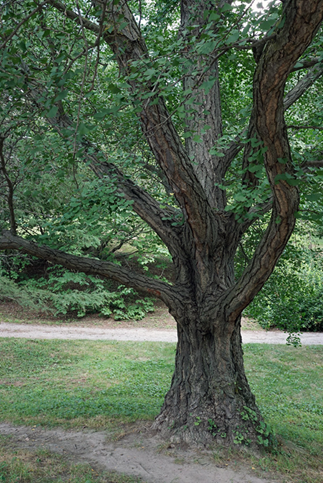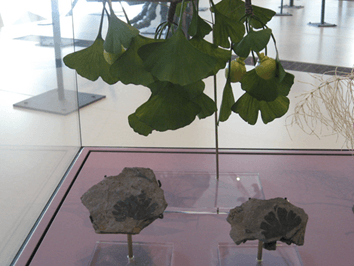Ginkgo biloba: The Maidenhair Tree
Trees have always been a major part of horticulture, gardening, and landscaping. As more suburbs, urban parks, gardens, and cities seek to expand their tree canopies, I would like to talk about one of my favorite trees Ginkgo biloba , the Maidenhair Tree. Originally from China, this tree is one of the oldest species and is used in a variety of plantings. The main draw of Ginkgo biloba are the unique leaves, the fall color, and its versatility in the landscape.
Ginkgo
biloba
is an ancient tree with leaf fossils dating back 270 million years (Ginkgo:
Ginkgo biloba
n.d). Native to
southeast China, this tree has been found to live up to 3,000 years. It was brought to the United States in the
1700’s after being rediscovered in China in 1691 (Ginkgo:
Ginkgo biloba
n.d). The genus name
Ginkgo
is
derived from the misrendering of the Japanese words
gin
(silver) and
kyo
(apricot) (Ginkgo n.d). The common name,
the Maidenhair Tree, is derived from the leaves looking similar to the leaflets
of the Maidenhair Fern (Gingko n.d).
Ginkgo biloba Leaf fossils On Display
The Maidenhair Tree is mostly known for its unique leaves which are lobed, fan shaped, rich green, and turn brilliant yellow in the fall. The height and spread of trees can greatly vary depending on cultivars. Mature heights across the entire species range from 25-100 ft. Mature canopy spreads range from 25-40 ft. The shape of the tree canopies and trunk sizes also vary by cultivar. When selecting a tree choosing the right cultivar is important.
Ginkgo biloba
in Fall
Ginkgo biloba Leaf
Ginkgo trees are one of the most versatile for your landscape. They prefer full sun but can survive in part shade (need at least 4 hours of sun). Hardy in USDA zones 3-8, these trees are compatible with almost any soil: clay, sand, silt, loam, wet, dry, or medium. They grow best in sandy, moist, well drained soils and also tolerate acidic, alkaline, and compacted soils. Ginkgo trees can tolerate air pollution, salt conditions, and heat. There are no serious pest issues. They adapt well to urban environments. Issues with the Ginkgo tree include slow growth, insignificant blooms, and female trees producing fruit that is known to have a noxious smell. Most nurseries only sell male trees, but always confirm the trees you purchase are male.
Ginkgo biloba Uses
Apartment Planting Street Planting
Woodland Planting Bonsai
As urban tree canopies continue to expand, the demand for interesting and reliable trees is increasing. Ginkgo biloba has proven to be one of the trees that meets this demand. With its unique leaves, fall color, and adaptability it has become a popular tree to plant where stress is high. If you are searching for an interesting tree that can grow in harsh conditions, consider Gingko biloba , the Maidenhair Tree.
References
Gingko. (n.d.). Retrieved from https://www.arborday.org/
Ginkgo: Ginkgo biloba . (n.d.). Retrieved from http://www.missouribotanicalgarden.org/







